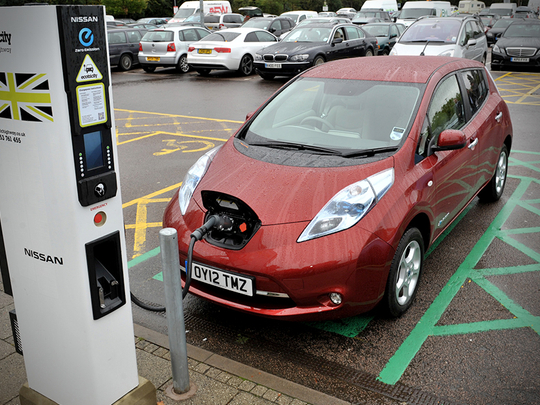
Readers may recall my mentioning that I stopped driving 15 years ago in preference for public transport and taxis when public transport is not available.
But having visited Norway recently, I couldn’t resist the urge to drive an electric car and immediately realised why people, at least in Norway, are increasingly in favour of them.
The drive was nice and the car very quiet and I was told of the low running cost and maintenance requirements.
But all this is not enough to convince everyone to go electric and the government have been adding one incentive over another since 1990.
Incentives
The IEA enumerates these incentives such as “no purchase/import taxes (1990), exemption from 25 per cent VAT (2001), low annual road tax (1996), no charges on toll roads or ferries (1997 and 2009), free municipal parking (1999), access to bus lanes (2005), 50 per cent reduced company car tax (2000) and exemption from 25 per cent VAT on leasing (2015).”
The financial subsidies could be worth more than $8,000 (Dh29,360) per car per year excluding the advantage of driving in bus lanes for speedier transit.
These brought an exponential growth in electric vehicles, from 5,400 in 2011 to 135,500 in 2016, accounting for 29 per cent of all new cars sold in 2016.
Battery electric vehicles (BEVs) accounted for 75 per cent and plug-in hybrids (PHEV) for the rest.
The trend is continuing: half of all vehicles sold in the first two months of 2017 were EVs.
The policy is driven by Norway’s desire to reduce carbon emissions by 40 per cent by 2030 and be carbon neutral by 2050.
Public transportation will be fossil fuel-free in five years, whereby all buses will be electric and taxis will be zero emission cars by 2022.
No more ICE vehicles by 2025
No vehicles powered by fossil fuels (internal combustion engines, or ICE) will be sold in Norway after 2025.
This growth is supported by advances in technology with respect to battery capacity and the increase in the distance travelled between chargings to about 400 kilometres for some models.
At the same time, battery cost — 40 per cent of car price — is falling dramatically and expected to continue so.
The proliferation of charging points to 7,632 by March 2016 — including 1,966 in Oslo — is another factor.
But for how long can the Norwegian government keep these incentives?
Many believe the trend will be reversed if incentives are rolled back.
Even though gasoline prices are high at $1.84 a litre.
The government is said to have lost around $640 million in revenue in 2014 due to the incentives.
The incentives were supposed to be removed after reaching 50,000 EVs.
But this target was overtaken and in May 2015, the government decided to keep the incentives through 2017, and to reduce and phase out some from January 2018.
But in spite of some complaints, this may happen gradually to avoid any setback.
People are also complaining of congestion in bus lanes due to increasing numbers of EVs and the shortage of parking spaces for conventional cars.
Complaints and reduction of incentives did not deter the Norwegian Electric Vehicle Association to say that for the country to meet its emission targets, the number of BEVs should target 400,000 by 2020.
Norway’s government is aiming for zero growth in private car use by 2030.
There are plans to spend almost $1 billion on a new network of bike highways and expansion of public transport.
The transport sector is not the only one desired to go electric. Energi Norge, an industry advisory body, said that Norway can become the world’s first fully electric-powered country whereby it is possible for the country to operate entirely using clean electricity by 2050.
Domestic demand
Energy consumption in Norway in 2015 was 29.6 million tons of oil equivalent with 40 per cent coming from hydro sources.
In 1950, hydropower generation was about 3,000MW and now, it is close to 30,000 MW from 1,166 stations.
The potential could double Norway’s hydropower generation, which will help it to increase exports and supply domestic demand for the foreseeable future.
It will be interesting to watch whether Norway’s targets will be met.
The number of private cars is close to 2.7 million and EVs are only 5 per cent now. Norway is a large country and people are uncertain about BEV and that is why hybrids are increasing at a higher rate.
This may explain why oil consumption is steady, or slightly increasing, in recent years.
Can the Norwegian example be followed by other countries? Only if a country is as rich and if renewable electricity is abundant and cheaply available.
— The writer is former head of the Energy Studies Department at the Opec Secretariat in Vienna.












